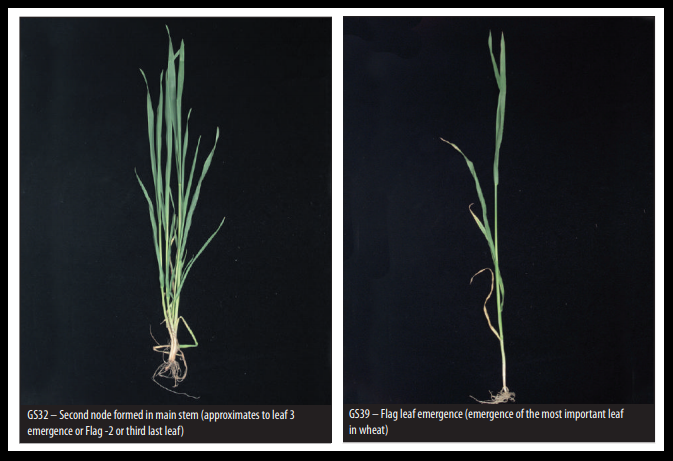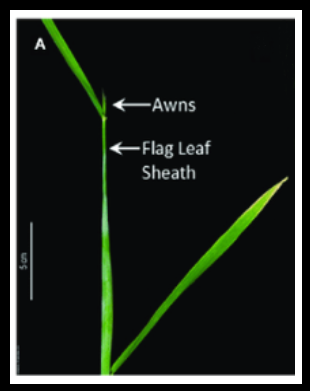Fungal diseases in cereals in 2020
By Tim Bartimote, Cropping Officer
July 2020
Beware the perfect storm of plant disease this season. Relatively warm temperatures and a wet start to the season has seen an increase in rusts on wheat and net blotch in barley. We recommend you take time to assess your crops and don’t become complacent in varieties with promoted Adult Plant Resistance (APR).
2020 has had an amazing start for most growing regions within Central West NSW. A rare, late summer, early autumn break meant that crops were sown early and grew biomass quickly. In some instances, seed from last season germinated and emerged as volunteers in fallows before sowing. These volunteers can act as a ‘green bridge’ by providing a host for fungal pathogens such as rusts until the new crop is sown. The environmental conditions, paired with volunteer cereals enables pathogens like stripe rust in wheat, which require a living host, to have ample opportunity to infect and survive between seasons. For diseases that can survive on stubble such as net blotches in barley and yellow spot in wheat, minimal breakdown during the drought has enabled spores to survive in paddocks. If left unchecked, high infection levels in susceptible varieties can lead to reductions in grazing potential and yield.
Yield loss depends on the variety grown, when the epidemic began, the amount of disease present and grain fill conditions at the end of the season. For example, in varieties rated S for stripe rust, infections which began at flag leaf emergence (GS39) have been recorded to reduce yield by up to 75%. While the same level of disease pressure, in a R-MR variety, would likely cause only 5% yield loss. However, the same S variety may only incur a 12% yield loss when stripe rust infection occurs mid-flowering (GS65). Therefore, variety selection in terms of resistance level and managing infection timing with fungicide intervention in susceptible varieties is so important (Murray et al. 2005).
Some varieties will be at more risk of infection than others due to their current resistance ratings, and this is a critical point to remember. When a variety is released, it may be introduced to the market with a certain rating but over time this rating can be lowered. Pathogens can adapt to plant resistance or there may be a reduction in purity of the seed over time, due to intermixing between varieties, which may have a different disease rating. Growers should be mindful of new pathotypes which may impact disease ratings. For example, a new Yr198 pathotype in stripe rust has reduced DS Bennett from an R down to a S rating in 2020. Pathotype Lr24+ in leaf rust has also impacted ratings in regions where it is present (Table 1 & Table 2). Producers can access this updated information in the Winter Crop Variety Sowing Guide which is published each year by NSW DPI. A link for the 2020 guide can be found here.
Table 1. Examples of cereal varieties which may be at risk to new pathotypes (Yr198 in stripe rust and, if present, Lr24+ in leaf rust) or existing ones.
Crop | Variety | Stripe Rust (Yr198) | Leaf Rust (Lr24+) |
Wheat | DS Bennett | S | S-VS |
LRPB Trojan | MS-S | MS | |
Illabo | MR | S | |
EGA_Gregory | MR | MS | |
LRPB Flanker | R-MR | MS-S | |
LRPB Lancer | MR | MS | |
Durum Wheat | DBA Lillaroi | MS | R-MR |
DBA Vittaroi | MS | MR | |
EGA Bellaroi | MS | R-MR |
Table 2. Barley ratings for spot form (SF) and net form (NF) of net blotch are also provided. If your variety is not listed, please check the current disease rating. When (&) is present, the second rating is to new pathotypes which are present in some regions.
Crop | Variety | NF Net Blotch | SF Net Blotch |
Barley | Spartacus CL | MR & S | S-VS |
Planet | S | S-VS | |
Compass | MR-MS | MS-S | |
Hindmarsh | MS | S-VS | |
La Trobe | MS | S |
It is important to remember that not all yellowing is going to be a result of cereal disease. Climatic conditions (e.g. frost), nutrient deficiencies, plant variety genetics and herbicide applications can all cause some form of crop yellowing. Accurate identification is critical for making informed decisions on disease management. For more info on leaf symptoms in wheat and barley, check out this GRDC Pocket Guide here.
Further assistance can be found by sending a clear photo to NSW DPI Plant Pathologist Dr Steven Simpfendorfer on 0439581672 or contacting Central West Local Land Services Cropping Officer Tim Bartimote on 0409838914.
When to apply fungicide?
Managing leaf disease with fungicides is primarily about timing, by preventing the spread further up the plant and impacting critical leaves which are heavily responsible for grain fill. In cereals, target fungicide applications to protect the top three leaves. This is the flag leaf (full emergence at GS39) and the previous two leaves to emerge before it (GS32). In wheat applying fungicide at GS32 and GS39 is generally your best bang for your buck. Equally, applying fungicide to the seed or in the furrow at sowing followed by an application at GS39 is also a good option.
For barley, the recommended two-time applications are GS32 and when the awns of the head start emerging (GS49). This slightly later second application, compared to wheat, will help protect the flag leaf sheath (Figure 2).
Applications prior to GS32 may not be particularly effective, as there is no systemic movement of fungicides into new growth. Hence, any un-emerged leaves at the time of application will still be susceptible to infection.

Figure 1. An example of key growth stages to look for when applying fungicide in wheat. Which is GS 32 & 39 on the Zadok's scale (GRDC 2005)

Figure 2. An example of GS49, a key growth stage for spraying fungicide in barley. Notice the awns have just begun to emerge from the flag leaf sheath (Ahmad & Thorsten 2017).
In general, varieties which have an MR rating or better for current pathotypes will likely not require fungicide protection. However, as previously mentioned, pathogens can adapt to plant resistance. Accuracy of application is also important. Use a registered product for the pathogen you have found and ensure you are getting product into the canopy, via correct spray quality and water volume. If you find any disease symptoms on a variety currently rated as resistant to that disease, or suspect you have found unusual symptoms, you should mark the location in the field, take clear photographs of the symptoms and send details, including the variety and your contact details, to the biosecurity email at biosecurity@dpi.nsw.gov.au or contact the Biosecurity hotline on 1800 084 881.
For more information on cereal diseases or assistance with in-field identification feel free to contact your Local Land Services ag advisor.
Resources
Ahmad, A, & Thorsten, T 2017, ‘Heading Date Is Not Flowering Time in Spring Barley’, Frontiers in Plant Science. vol. 8. p. 3389
GRDC 2005, Cereal Growth Stages, Available at: https://grdc.com.au/__data/assets/pdf_file/0031/364594/Cereal-growth-stages.pdf
GRDC 2011, Wheat & Barley Leaf Symptoms: THE BACK POCKET GUIDE, Available at: https://grdc.com.au/__data/assets/pdf_file/0024/210696/wheat-barley-leaf-symptoms-the-back-pocket-guide-grdc043.pdf.pdf
GRDC 2012, Adult Plant Resistance - Fact Sheet, Northern, Western & Southern Regions. Available at: https://grdc.com.au/__data/assets/pdf_file/0025/126457/adult-plant-resistance-fact-sheet.pdf.pdf
Murray, G, Wellings, C, Simpfendorfer, S, Cole, C, 2005, Stripe rust: Understanding the disease in wheat - NSW DPI. Available at: https://www.dpi.nsw.gov.au/__data/assets/pdf_file/0006/158964/stripe-rust-in-wheat.pdf
NSW DPI 2020, Winter Crop Variety Sowing Guide 2020, Available at: https://www.dpi.nsw.gov.au/__data/assets/pdf_file/0005/1211729/FINAL-WCVSG-2020-web.pdf